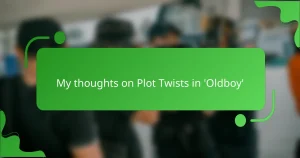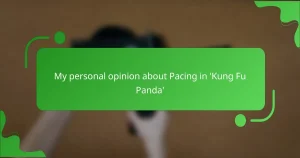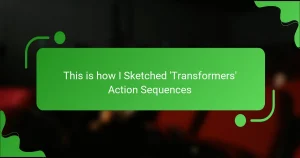Key takeaways
- Action short films condense high-stakes narratives into brief formats, maintaining viewer engagement through fast pacing and emotional depth.
- Key structural techniques include the three-act structure, character development, pacing, foreshadowing, and conflict introduction, all enhancing storytelling effectiveness.
- Marvel’s mastery of blending action and character arcs serves as a valuable template for filmmakers, emphasizing the importance of emotional connection and varied pacing.
- Integrating elements like humor can enhance the emotional weight of stories, making them more relatable and impactful for audiences.
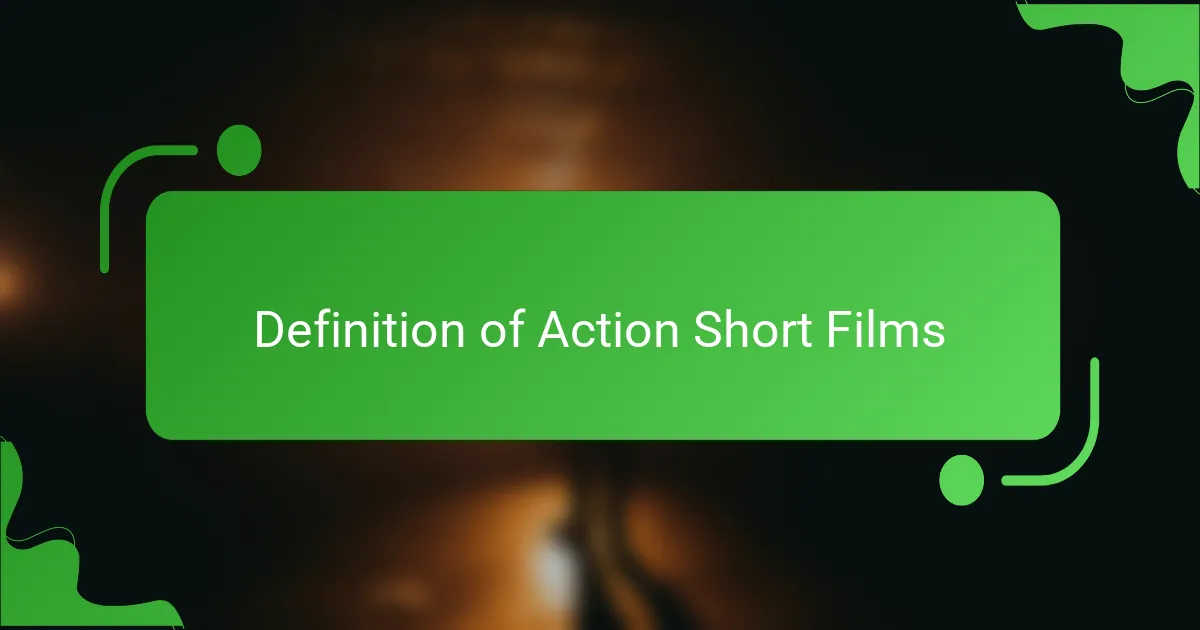
Definition of action short films
Action short films are dynamic, fast-paced visual stories that pack excitement and tension into a brief runtime, usually under 40 minutes. I’ve always found them fascinating because they condense the thrill of a full-length action film into a compact experience, allowing filmmakers to showcase their creativity and technical skills rapidly. In my opinion, the challenge lies in developing a compelling narrative that engages viewers while delivering high-stakes action in a short span.
The beauty of action shorts is their ability to convey intense emotions quickly. I’ve watched many that masterfully establish character arcs and suspenseful plots, often leaving a lasting impression long after the credits roll. For me, it’s a testament to the power of storytelling—how much can be said in so little time.
| Aspect | Action Short Films |
|---|---|
| Duration | Typically under 40 minutes |
| Narrative Complexity | Concise, focuses on core conflict |
| Viewer Engagement | High, due to fast pacing and action |
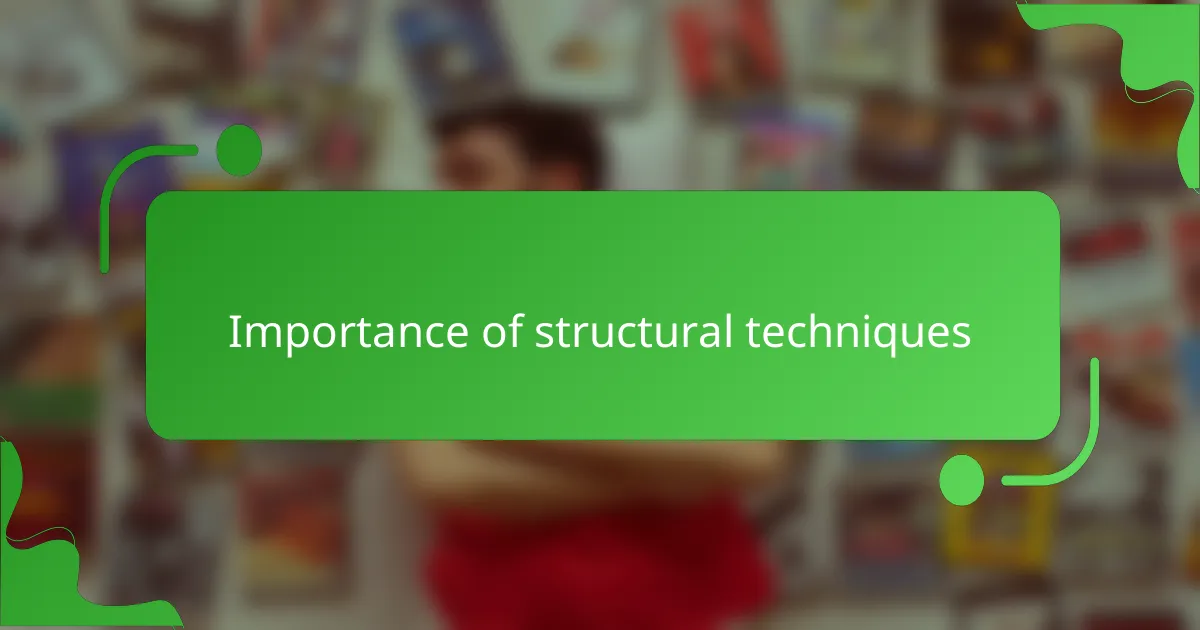
Importance of structural techniques
Understanding the importance of structural techniques in storytelling has transformed how I approach action short films. Marvel has perfected a formula that blends character arcs with escalating conflict, resulting in a rhythm that feels both thrilling and satisfying. I often find myself analyzing their methods, especially the way they build tension leading up to climactic moments, which certainly keeps viewers on the edge of their seats.
When I look at the work of Marvel, I notice several structural techniques that truly stand out:
- Three-Act Structure: An effective way to establish clear beginnings, middles, and ends that guide the audience through the narrative.
- Character Development: Focusing on characters’ growth, which makes their victories and failures resonate deeply with viewers.
- Pacing: Using quick transitions between action sequences and quieter character moments to maintain engagement.
- Foreshadowing: Planting clues early on that create anticipation, enhancing the viewing experience when those elements come to fruition.
- Conflict Introduction: Gradually escalating conflicts, which not only engage viewers but also create a satisfying release when resolved.
These elements are so critical, and they inspire not just my film analysis but also my own storytelling endeavors.
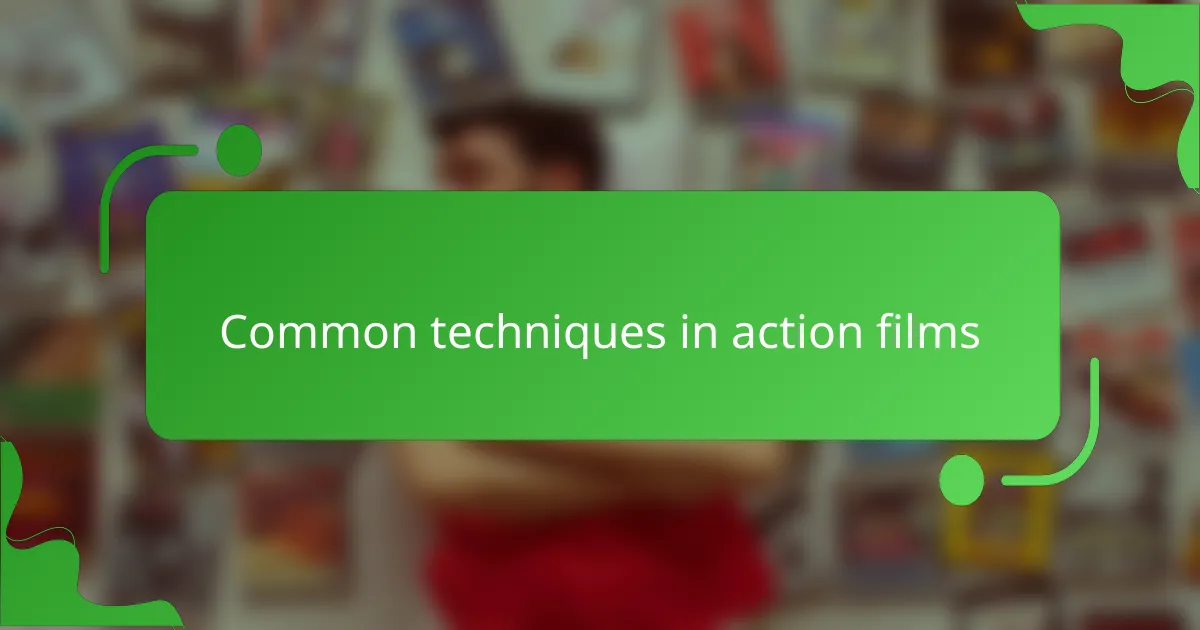
Common techniques in action films
When I think about common techniques used in action films, it’s fascinating how they create breathtaking sequences that keep viewers on the edge of their seats. For instance, the use of quick cuts and dynamic framing can heighten tension, making a chase scene feel even more frantic. I remember watching a particularly thrilling car chase and realizing that the rapid shifts between angles amplified my heart rate; it was a masterclass in editing!
A few renowned techniques that stand out in action films include:
- Fast-paced editing: Cuts between shots happen rapidly to increase suspense.
- Dynamic camera angles: Low and high angles create a sense of power or vulnerability.
- Choreographed fight sequences: Well-planned stunts tell a story while exhibiting skill.
- Sound design: Powerful audio effects elevate the action quality, immersing viewers emotionally.
- Slow motion: Used to emphasize a critical moment, making it impactful for the audience.
Reflecting on these elements, it’s clear that each technique not only enhances the visual experience but also resonates with the audience on a deeper, almost primal level.
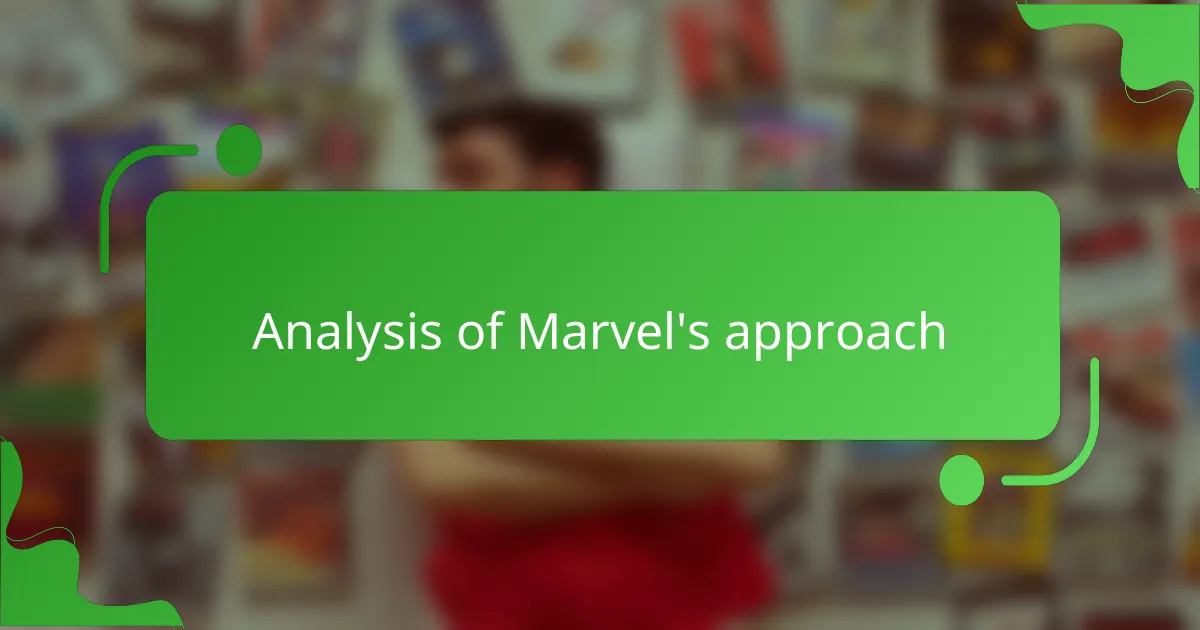
Analysis of Marvel’s approach
When analyzing Marvel’s approach, I can’t help but appreciate their mastery of the three-act structure. It provides a clear roadmap for storytelling, making the journey feel satisfying. I recall watching “Guardians of the Galaxy,” where each act flowed seamlessly into the next, keeping me engaged and emotionally invested. It’s intriguing how they establish a hero’s journey in such a condensed format, isn’t it?
Character development is another cornerstone of Marvel’s technique that resonates with me. I find myself rooting for characters like Iron Man, not just for their superpowers but for their growth. It’s remarkable how they craft relatable flaws and strengths, making their victories feel earned. Several times, I’ve left the theater pondering the moral lessons woven into their arcs and how these complexities elevate a mere action flick into something profound.
Pacing is where Marvel truly shines; it’s as if they know just when to shift gears. I’ve noticed how they skillfully balance intense action with quieter, reflective moments—this keeps the audience emotionally charged yet grounded. A perfect example would be the nuanced interaction between characters right before a battle. Those pauses in action heighten anticipation and draw me deeper into the narrative. Have you ever felt that rush of adrenaline when everything just clicks together? That’s the magic of their pacing.
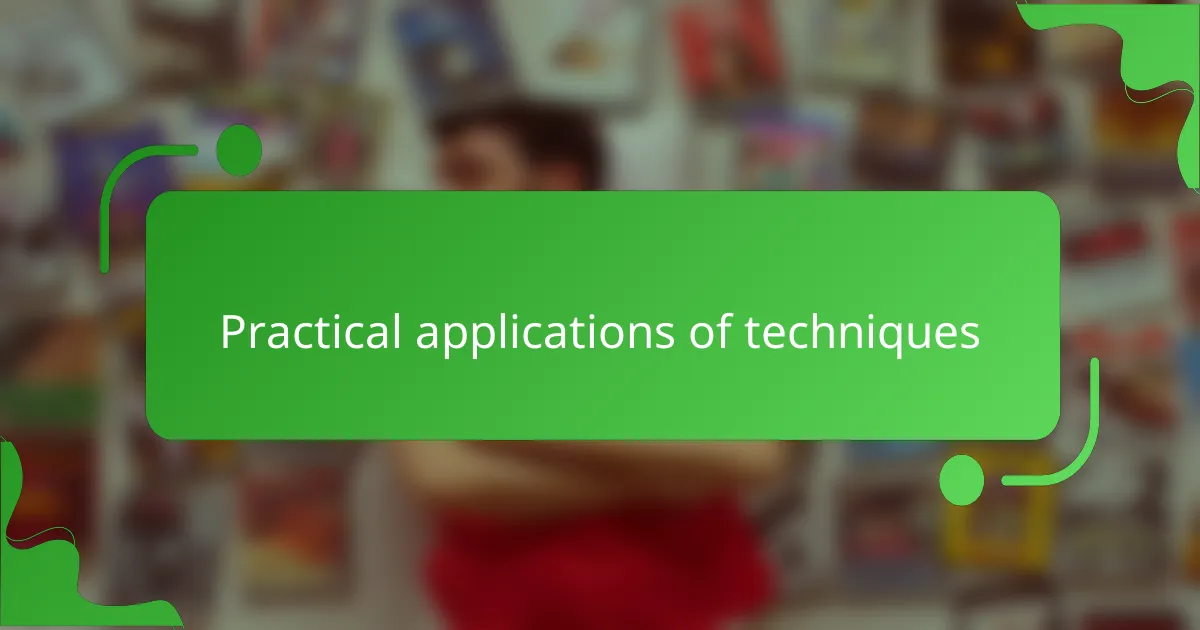
Practical applications of techniques
I’ve found that Marvel’s structural techniques can be incredibly effective, not just in their blockbuster features but also in the realm of action short films. One popular technique is the use of the hero’s journey, which I’ve seen resonate well with audiences. This structure creates a strong emotional connection, as the viewer follows a character’s transformation through relatable trials and triumphs.
Another aspect I’ve analyzed is the pacing of action sequences. Marvel often balances intense moments with quieter, character-building scenes. This rhythm keeps the audience engaged and allows for emotional investment, something I’ve adopted in my own short films to elevate storytelling. The emotional depth really adds weight to the action, making the stakes feel real.
Here’s a comparison table to illustrate some practical applications of these techniques:
| Technique | Application in Action Short Films |
|---|---|
| Hero’s Journey | Craft a relatable protagonist undergoing transformation, enhancing emotional connection |
| Pacing | Blend intense action with character development to sustain audience engagement |

Personal insights from analysis
When I dove into analyzing Marvel’s structural techniques, I was struck by how they weave character development with action seamlessly. I remember watching “Black Panther” and feeling the emotional connection to T’Challa, crafted through well-timed flashbacks that added depth to his journey. It’s this blend of narrative and spectacle that keeps audiences engaged, something I’ve tried to emulate in my own short film projects.
One of the standout techniques is how Marvel balances humor and serious themes. In “Guardians of the Galaxy,” moments of levity broke tension and made the character arcs more relatable. I often find that integrating humor into action can enhance the emotional weight of a story, a lesson I’ve learned from these iconic films.
| Marvel Technique | Personal Insight |
|---|---|
| Character Development through Flashbacks | This technique deepens audience connection, as seen in “Black Panther.” |
| Blend of Humor and Serious Themes | Integrating humor keeps action engaging, a lesson for my own projects. |
